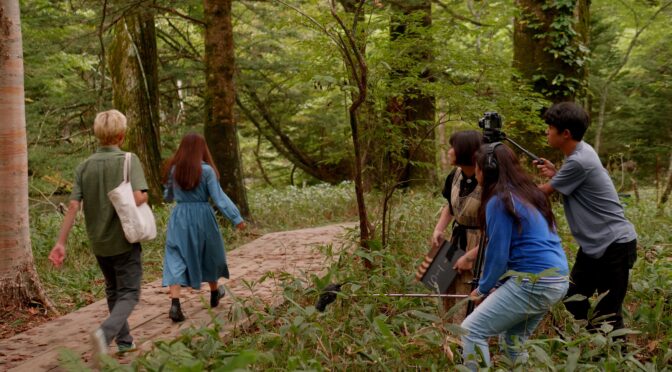Article by Romeo Gjokaj
Translation by Sebastiano Liso
No man ever steps in the same river twice, for it’s not the same river and he’s not the same man. This idea, which can be traced back to the Heraclitean philosophy of Panta Rei, “everything flows,” well represents the meta-cinematic spirit of Retake, Japanese director Kôta Nakano’s debut. The film was presented at the Nuovimondi (“New Worlds”) section of the 41st Torino Film Festival.
Kei (Yutâ Mutô) is a quiet boy with a passion for photography; one of his favourite models is his schoolmate Yu (Urara), whose exuberant dynamism will only result in blurry shots. The girl drags Kei into her film project, which will involve three other peers. The screenplay conceived by Yu is the story of Umi (Nako Ôhara) and Jirô (Ryûsei Chiba), two boys searching for a place where time stands still. This seems to be Kei and Yu’s goal as well, as they travel across the masses of water that pervade the shots, abandoning themselves in a spontaneous flow of emotions. They also appear to be looking for a moment of stillness and happiness to be immortalized both in their film and in their lives. Precisely for this, the real protagonist of the film, the one shot by the characters as well as the one we see on the screen, is water. It can be the impetuous water of the sea, the lively water of rivers and streams, or the calm water of the lake in the ending, a metaphor for the passing of life and cinema, the only art able to capture the essence of time and movement in their becoming.

The actions of the characters are mixed with the film they are trying to make with many difficulties. As the narrative progresses, the fine line separating the two worlds vanishes altogether. Cinema and its language take over, and Retake displays them in all their naturalness: from the enveloping dominance of live-captured nature sounds, to the film photography, adapted to natural sunlight, from the static direction which frames the green summer landscapes, to the editing that takes place in real time as we watch the film, sketching a meta-cinematic loop which reflects the performances of the young cast members having fun and entertaining the viewers. On their journey, the protagonists will get a chance to think and rethink about their emotions. They also have to decide whether to repress them or to let them flow genuinely, in a development journey which will make them realize that in life, unlike in photography, painting and cinema, time cannot be stopped. They will therefore be left with a choice: to dwell in the past and fear the future by shaping the present so that it reflects an elusive and fleeting idea of happiness, or to surrender to the unpredictable passing of life and accept even its harshest difficulties. (They will have to decide whether to repress or to let them genuinely flow in a training journey. Thanks to this, thet will realize that in life, unlike in photography, painting and cinema, time cannot be stopped. They will be therefore left with a choice: to dwell in the past fearing the future by shaping the present to reflect an elusive and fleeting idea of happiness, or if to surrender to the unpredictable passing of life (non mi convince) accepting even its harshest difficulties.

